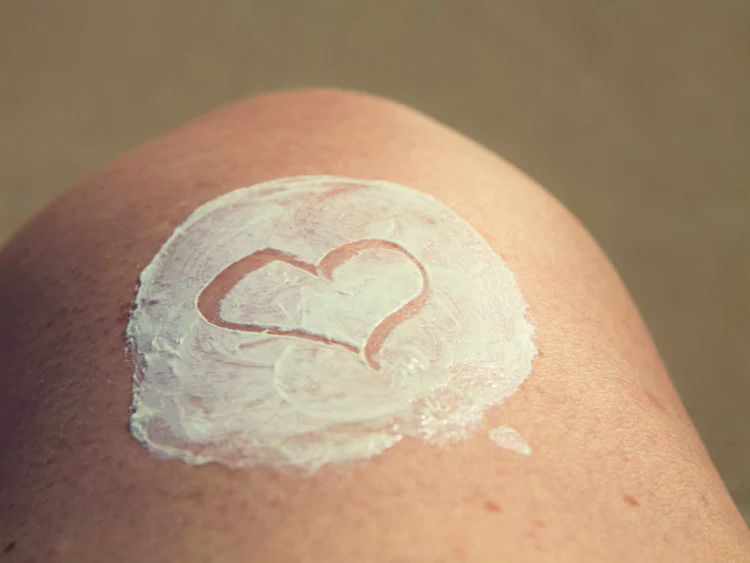With Summer finally on the way, we can start planning those glorious long days outside in the sunshine. Protecting your skin from the harmful rays of the sun are now more important than ever! With so many brands out there, how does one even begin to choose the right sunscreen? And which ones are safe for your skin and the planet?
Niamh Alford from Sage Natural Skincare shares with us her tips on how to choose the right sunscreen- what ingredients to look out for, which to avoid & some useful information on why.
Issue with suncream
While many of us are aware of the impacts of plastic waste from cosmetics on the ocean and freshwater environments, something less talked about (although just as important) is the chemical impacts of these cosmetics on our water systems. There is none more reflective of this than sunscreens.
Many of the sunscreens on the market contain nanoparticles and other chemicals in order to absorb or reflect UVA and/or UVB rays to protect the skin from the sun’s harmful rays that can lead to sun damage and skin cancer. The issue with these chemicals is that they are having a huge ecological impact, the extent of which is not yet fully understood. What we do know is that they are harming coral reefs, algae and other aquatic life. They enter the water systems either directly through swimming/bathing, or through waste water when we shower or wash textiles, as they are not easily removed by common water treatment methods. In fact studies have found them in almost all water sources across the world (1), including Alpine lakes (2).
The most well studied UV filters that have environmental impacts are oxybenzone (benzophenone-3), octocrylene, octinoxate. These can accumulate in corals and research has shown they are contributing to coral bleaching. In fact in some countries like Hawaii they have even been banned because of this (3). These chemicals have also been shown to damage algae, which are an important part of aquatic ecosystems and food chains and the upstream impacts of this are largely unknown at this point (4). They have also been found in fish, which may be a result of them ingesting organisms further down the food chain such as algae (5). Worryingly, studies have shown that in high concentrations they can impact fertility in fish which could then have a detrimental effect on their numbers, which for many species are already under threat due to overfishing, global warming and pollution (6).
Ecosystems are so complex that we have only begun to scratch the surface in understanding their immensely intricate webs. When we damage one small part of that web we cannot begin to predict all the downstream effects this can cause. That’s why it is so important that we move away from these UV filters, and luckily there are safe, natural and effective alternatives available to us!
So what can you do?
While the environmental impacts of sunscreens are undeniable, human health is also important to consider. Ditching the sunscreens entirely would be unsafe and not advisory, so how can we have the best of both worlds? The best thing to do is to find a certified, natural sunscreen that doesn’t contain nanoparticles.
Although it can be tempting to do a DIY formula from a recipe online, this is not something I would recommend. Normally I love a DIY recipe, but the impact on your health from an untested recipe is not something to be messed with and would likely lead to sun damage at best, skin cancer at worst.
Sunscreens on the market have to go through rigorous testing that complies with strict regulations to ensure that the SPF rating is accurate and safe, so in this case it’s best to look to certified companies that make these products rather than make it yourself.
What to avoid/look for when buying a natural, reef-safe sunscreen?
In order to protect your skin effectively you need a broad spectrum SPF that protects against both UVA AND UVB rays. Two recognised, natural UV filters are zinc oxide and titanium dioxide. These are inert minerals that occur naturally and work by reflecting the rays back, so that they don’t reach your skin and damage it. When used in the correct quantities these are highly effective UV filters and are two of the only natural UV filters that are officially recognised as being safe and effective. In fact before companies started using nanoparticles in suncreams (which people used instead because they are transparent on the skin) this was what sunscreens were made of!
You want to avoid any formulae that are just oil based (for example raspberry seed oil). There are a lot of claims online that these oils have a high SPF, however there is no research to back this up and so they cannot be relied upon to have the broad spectrum protection recommended to keep your skin safe. They are also not officially recognised as an SPF and so a product that ONLY contains these (with no zinc oxide or titanium dioxide) is not a certified sunscreen.
When picking out a sunscreen it is recommended by dermatologists that you use a minimum of factor 30 on sunny days. For a daily sunscreen (which should be worn even on overcast days) you can go a little lower.
So in short, don’t ditch the sunscreens entirely. Instead, find a safe but effective alternative that contains zinc oxide and/or titanium dioxide, that has been properly tested.
At SAGE we are currently undergoing the rigorous process of formulating and testing to produce our own zero-waste, natural sunscreen that is zinc oxide based and hope to have it ready for this summer. In the meantime you can try products such as REN’s Clean Screen. Although not plastic free, the plastic they use is 50% post consumer waste and the sunscreen itself has been thoroughly tested.
- https://www.sciencedirect.com/science/article/abs/pii/S0190962218321893
- https://www.sciencedirect.com/science/article/abs/pii/S0045653504000426
- https://www.nature.com/articles/s41598-020-66117-3
- https://www.sciencedirect.com/science/article/abs/pii/S0166445X19305934
- https://www.sciencedirect.com/science/article/abs/pii/S0166445X08002798
- https://www.sciencedirect.com/science/article/abs/pii/S0166445X08002798



